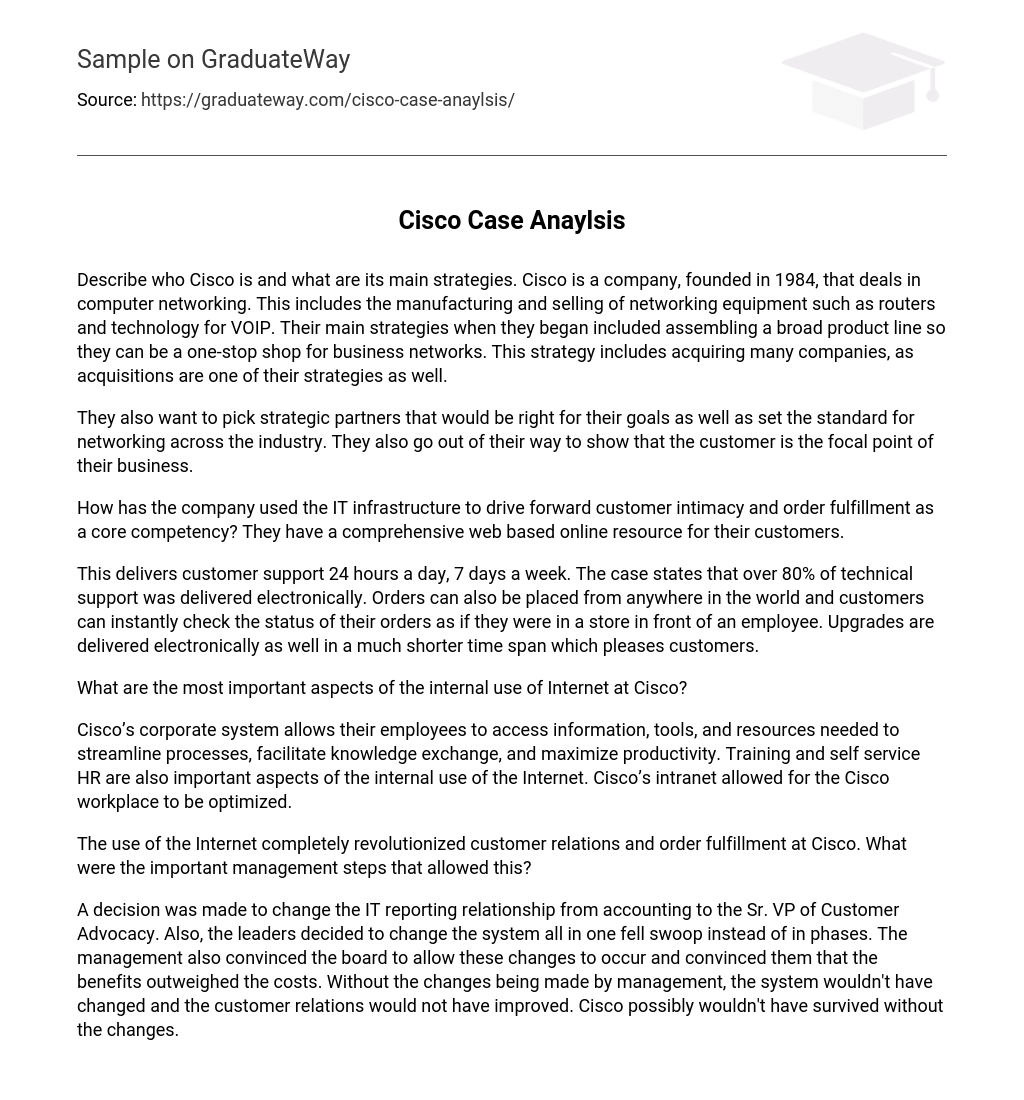Describe who Cisco is and what are its main strategies. Cisco is a company, founded in 1984, that deals in computer networking. This includes the manufacturing and selling of networking equipment such as routers and technology for VOIP. Their main strategies when they began included assembling a broad product line so they can be a one-stop shop for business networks. This strategy includes acquiring many companies, as acquisitions are one of their strategies as well.
They also want to pick strategic partners that would be right for their goals as well as set the standard for networking across the industry. They also go out of their way to show that the customer is the focal point of their business.
How has the company used the IT infrastructure to drive forward customer intimacy and order fulfillment as a core competency? They have a comprehensive web based online resource for their customers.
This delivers customer support 24 hours a day, 7 days a week. The case states that over 80% of technical support was delivered electronically. Orders can also be placed from anywhere in the world and customers can instantly check the status of their orders as if they were in a store in front of an employee. Upgrades are delivered electronically as well in a much shorter time span which pleases customers.
What are the most important aspects of the internal use of Internet at Cisco?
Cisco’s corporate system allows their employees to access information, tools, and resources needed to streamline processes, facilitate knowledge exchange, and maximize productivity. Training and self service HR are also important aspects of the internal use of the Internet. Cisco’s intranet allowed for the Cisco workplace to be optimized.
The use of the Internet completely revolutionized customer relations and order fulfillment at Cisco. What were the important management steps that allowed this?
A decision was made to change the IT reporting relationship from accounting to the Sr. VP of Customer Advocacy. Also, the leaders decided to change the system all in one fell swoop instead of in phases. The management also convinced the board to allow these changes to occur and convinced them that the benefits outweighed the costs. Without the changes being made by management, the system wouldn’t have changed and the customer relations would not have improved. Cisco possibly wouldn’t have survived without the changes.





